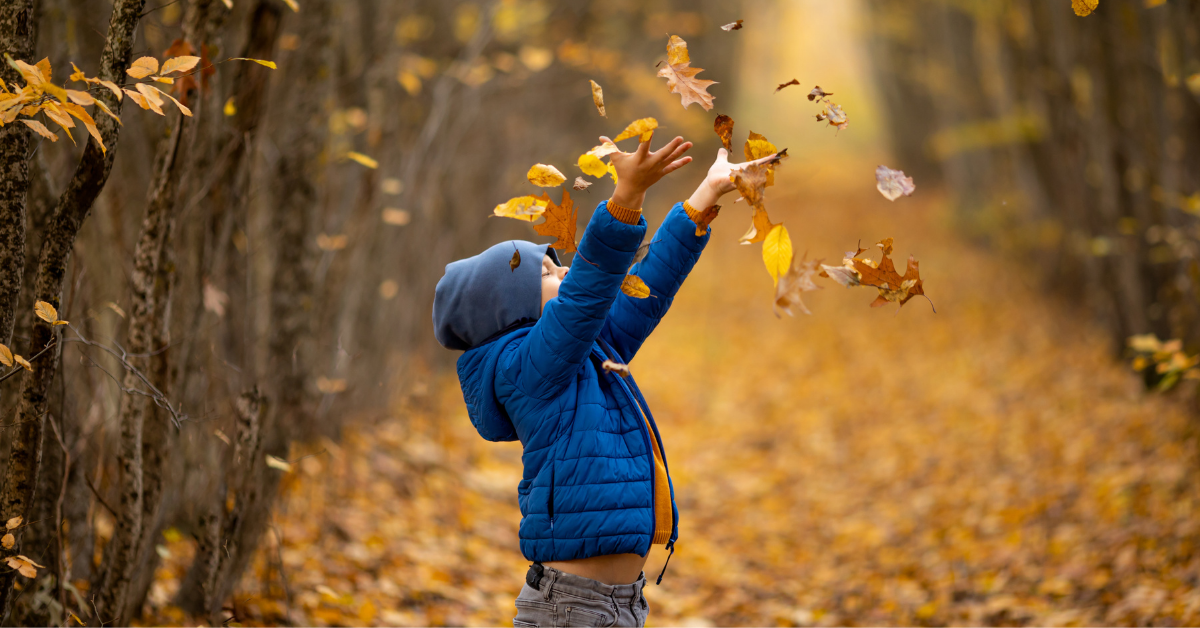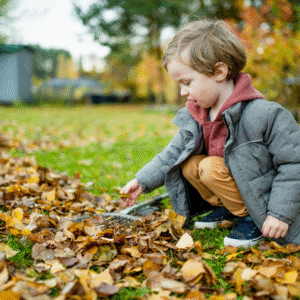Helping Children with Autism Navigate Seasonal Changes
As autumn arrives in New England, bringing cooler temperatures, changing leaves, and shifting routines, many children with autism spectrum disorder experience heightened anxiety and behavioral challenges. What appears as simply a change in seasons to neurotypical individuals can feel overwhelming to children with autism who thrive on predictability and consistency.
At Pathways Strategic Teaching Center, Trudeau’s specialized program for children with autism and related disorders, professionals understand that successful transitions require preparation, support, and evidence-based strategies. With over 25 years of experience utilizing Applied Behavior Analysis (ABA) techniques, Pathways has helped countless families navigate seasonal changes while minimizing stress and maximizing success.
Understanding Seasonal Sensitivities
For children with autism, fall brings a cascade of sensory and routine changes that can trigger anxiety and dysregulation. The transition from summer to autumn affects nearly every aspect of daily life—clothing textures change from light fabrics to heavier materials, daily schedules shift as school routines intensify, daylight hours shorten affecting visual input, and outdoor temperatures require constant adaptation.
“Seasonal transitions impact children with autism on multiple levels simultaneously,” explains Mackenzie Milner, Clinical Director of Pathways Strategic Teaching Center. “They’re not just adjusting to cooler weather, they’re also managing new clothing sensations, earlier bedtimes due to darkness, different foods becoming available, changes in outdoor play opportunities, and shifts in family routines. When we understand the complexity of these changes, we can better support children through the transition.”
The sensory experiences of fall can be particularly challenging. Crunching leaves underfoot, wind on exposed skin, the smell of wood smoke, and the visual stimulation of changing colors all provide intense sensory input that some children find distressing while others may seek out excessively.
Visual Supports for Seasonal Transitions
One of the most effective strategies for helping children with autism navigate seasonal changes involves using visual supports to make abstract concepts concrete. Visual schedules, social stories, and picture sequences can illustrate what changes to expect and when they will occur.
Create a “fall changes” visual board showing the transition from summer to autumn. Include pictures of seasonal clothing, weather patterns, and activity changes. Review this board regularly in the weeks leading up to and during the seasonal transition, helping your child anticipate and understand what’s happening.
Social stories specifically addressing fall changes can be particularly helpful. These personalized narratives walk children through seasonal transitions step-by-step, explaining what will change, why it’s changing, and what will stay the same. The emphasis on continuity helps children recognize that while some elements are different, many comforting aspects of their routine remain unchanged.
Clothing and Sensory Considerations
The shift from summer clothing to fall layers represents one of the most immediate sensory challenges children with autism face during seasonal transitions. Strategies for managing this change include gradually introducing new clothing items, washing new items multiple times to soften fabrics, removing all tags and choosing seamless options, and allowing children to participate in selecting their fall wardrobe.
“We recommend starting the clothing transition early, well before cold weather requires it,” advises Milner. “Let children wear their new jacket for just a few minutes at a time indoors, gradually increasing duration. This systematic desensitization approach, rooted in ABA principles, helps children adjust to new sensory experiences at their own pace rather than being forced into uncomfortable clothing when temperatures suddenly drop.”
Consider creating a clothing choice board with weather-appropriate options. This visual support helps children understand the connection between weather conditions and clothing needs while maintaining some autonomy in decision-making.
Maintaining Routines During Seasonal Transitions
While some changes are inevitable during fall transitions, maintaining core routines provides essential stability for children with autism. Identify the non-negotiable elements of your child’s routine that can remain constant regardless of season – morning sequences, mealtime rituals, bedtime procedures, and preferred activities.
When changes to routine are necessary, implement them gradually and systematically. If earlier bedtimes become necessary as daylight shortens, shift bedtime by 10-15 minutes every few days rather than making abrupt changes. Use visual timers and countdowns to help children understand and accept routine modifications.
Outdoor Play and Physical Activity
Fall weather can complicate outdoor play, an important outlet for many children with autism. Temperature fluctuations make it difficult to predict appropriate clothing, wet leaves create slippery surfaces, and shorter daylight hours limit afternoon outdoor time.
Prepare for outdoor play by establishing a consistent routine for checking weather and selecting appropriate clothing. Use visual supports showing different weather conditions and corresponding clothing needs. Create an “outdoor play checklist” that children can reference independently as they develop these skills.
For children who resist outdoor play in cooler weather, gradually expose them to fall outdoor environments. Start with just a few minutes outside during the warmest part of the day, slowly increasing duration as tolerance builds. Pair outdoor time with preferred activities or rewards to create positive associations with fall outdoor play.
Addressing Halloween and Fall Events
October brings Halloween and numerous fall events that can overwhelm children with autism. The combination of costumes, decorations, crowds, and altered routines creates a perfect storm of potential triggers.
Apply the same systematic preparation used for other seasonal changes to Halloween. Visit pumpkin patches or corn mazes during off-peak hours for sensory-friendly experiences. Practice trick-or-treating at home or with trusted neighbors before Halloween night. Use social stories to prepare for Halloween events, and always have an exit plan if situations become overwhelming.
Leveraging ABA Strategies
The evidence-based ABA techniques used at Pathways Strategic Teaching Center can be applied at home to support children through seasonal transitions. Break seasonal changes into small, manageable steps. Reinforce successful adaptation with meaningful rewards. Collect data on challenging times or situations to identify patterns and develop targeted interventions.
When challenging behaviors increase during seasonal transitions, remember that behavior is communication. Children may be expressing discomfort with sensory changes, anxiety about routine disruptions, or difficulty understanding what’s expected in new situations. Respond with understanding and support rather than punishment.
Moving Forward with Confidence
Seasonal transitions will always present challenges for children with autism, but with preparation, understanding, and evidence-based strategies, families can minimize stress and support their children’s success. The key is anticipating changes, making them predictable through visual supports, and allowing children time to adjust gradually.
For families seeking additional support in helping children with autism navigate seasonal changes and other challenges, Pathways Strategic Teaching Center offers comprehensive, evidence-based programming.
AI may have been used in the initial drafting and research of this article. The information provided is for educational purposes only and is not intended to be, nor should it be interpreted as, medical, therapeutic, or individualized service advice. Every person’s needs and circumstances are unique. For information about services specific to you or your loved one, please contact the Trudeau Center.









